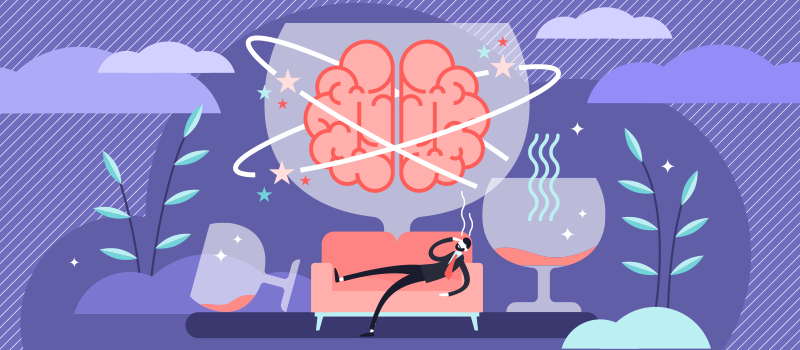What’s the Buzz
The Bee Healthy Blog
What Are the 5 Stages of Huntington’s Disease?

Huntington’s disease is a genetic, neurodegenerative disorder characterized by motor symptoms and emotional and cognitive symptoms. During the course of the disease, there is a gradual development of involuntary jerking muscle movements and a progressive decline in memory and cognitive function.
Please continue reading to learn more about the different stages of Huntington’s disease.
What causes Huntington’s disease?
Huntington’s disease (HD) is a genetic disorder that is inherited from a parent. It occurs due to a genetic mutation that results in a faulty gene in chromosome 4. The gene responsible for causing HD was identified in 1993.
Huntington’s is an autosomal dominant disease. This means if one parent has Huntington’s, there is a 50% chance an offspring will inherit it. Families affected by HD should get professional medical advice about screening and genetic testing.
According to the Huntington’s Disease Society of America, approximately 40,000 Americans are living with Huntington’s disease (HD), and an additional 200,000 are at risk of developing the condition.
There is no cure for neurological disorders like Huntington’s disease and no way to stop disease progression. The condition progresses slowly over the course of many years. Treatments for Huntington’s disease can make daily living easier and improve a person’s ability to live independently for as long as possible.
How fast does Huntington’s disease progress?
Early symptoms of Huntington’s disease typically develop between the ages of 30 and 50 years old. However, HD can also have an earlier onset. When HD occurs in young adults, it is called juvenile Huntington’s disease. The disease progresses slowly. A person with HD can live for 15-20 years after the first symptoms appear. Early diagnosis can help an affected person, and their family members make preparations for care.
What are the five stages of Huntington’s disease?
Stage I (Preclinical Stage)
This is the initial stage of disease onset, during which mild symptoms start appearing. During the preclinical stage, HD can be detected through genetic testing or screening. However, a person in the preclinical stage has not yet received an official diagnosis of Huntington's disease (HD).
Emotional symptoms and mood problems may appear during the preclinical stage before physical symptoms develop. These symptoms may include depression, irritability, learning difficulties, and problems with decision-making. The symptoms may not, however, be recognized as related to Huntington’s disease.
People in the preclinical stage of HD can usually carry out their daily activities without assistance. Stage 1 Huntington’s disease can last for 10-15 years or longer.
Stage II (Early Stage)
During stage 2 HD, nerve cells in the brain are further destroyed. The symptoms characteristic of Huntington’s disease slowly start to appear. In addition to the emotional, cognitive, and behavioral symptoms seen in stage 1, physical symptoms appear and are noticeable enough to arrive at a diagnosis of Huntington’s disease.
Motor symptoms in stage 2 HD may include loss of coordination, chorea (involuntary twitches in the face, fingers, and toes), and problems performing complex movements. Emotional symptoms can include irritability, depression, memory lapses, problems with concentration, and loss of inhibitions.
During this stage of Huntington's disease progression, most people can perform activities of daily living independently, such as domestic responsibilities, personal hygiene, and driving. However, mental instability and emotional symptoms can make work and relationships challenging. This can result in lower work performance or a need to reduce working hours. This stage can last for up to eight years after symptom onset.
Stage III (Intermediate or Middle Stage)
In the early intermediate stage and late intermediate stage, the effect of Huntington’s disease on a person’s life becomes more pronounced. Symptoms of the middle stage of HD can include severe motor symptoms, including involuntary movements (chorea), difficulty walking and maintaining balance, frequent falls, problems with swallowing, slurred speech, and weight loss. Mental symptoms can include problems with memory and concentration, difficulty learning new things, depression, mood swings, and disinterest in hobbies.
A person’s functional ability is significantly affected by this stage of HD progression. People in the middle stages struggle to perform basic daily tasks and can no longer work or manage their household or finances. The middle stage of HD can last from 5 to 16 years after symptom onset.
Stage IV (Late Stage HD)
The progressive breakdown of nerve cells in late-stage Huntington’s disease results in severe motor symptoms, including extreme difficulty with voluntary movements, severe involuntary movements, abnormal slow movements, rigidity, and speech impairment. In addition, depression, severe cognitive loss, sleep difficulties, and psychosis become more pronounced.
Patients with Huntington’s disease (HD) in the late stage (stage IV) require assistance in all areas of life, including major assistance with personal care and substantial help with household chores and finances. It can become difficult for a person with this stage of HD to live at home. A feeding tube may need to be inserted due to an inability to swallow.
The early advanced stage of Huntington’s disease usually starts about a decade after the first symptoms of the disease. This stage can last for 9 to 21 years after symptom onset.
Stage V (End-of-Life Stage)
This is the most advanced stage in Huntington’s disease progression. Symptoms include severe limitation of voluntary movements and problems with basic motor function. A feeding tube is frequently required due to swallowing problems. Individuals are bedridden, nonverbal, and completely dependent on others for personal care and daily living tasks.
Most patients with Huntington’s disease stage V require around-the-clock skilled nursing care at an extended care facility. Infections like pneumonia and falls are common complications in stage V and are often the cause of death in people with this stage of Huntington’s disease (HD).
What are the last symptoms of Huntington's disease?
The last symptoms in advanced stage Huntington’s disease (HD) include immobility, inability to speak, and inability to eat without a feeding tube. People in this stage of the disease often require full-time skilled nursing care. The disease is usually fatal 15 to 20 years after symptoms begin.
How do you slow down Huntington's disease?
There is currently no cure for Huntington disease and no way to slow down disease progression. However, supportive treatment can help to manage some of the symptoms.
Treatment may include medications such as antidepressants, mood stabilizers, and medicines to help control involuntary movements.
Physical and occupational therapy can help to make daily tasks such as eating, bathing, dressing, and doing household chores easier during the early stages of HD. A speech and language pathologist can help with communication difficulties.
People with Huntington’s disease may need modifications to their home, such as ramps, grab grills, a stairlift, electrical household appliances, and voice-controlled lights or computer software in the later stages.
Research and clinical trials are underway to find new treatments for HD. Scientists are trying to find ways of slowing down Huntington’s disease or perhaps even cure the condition by "switching off" the faulty gene.
References:











SOCIAL